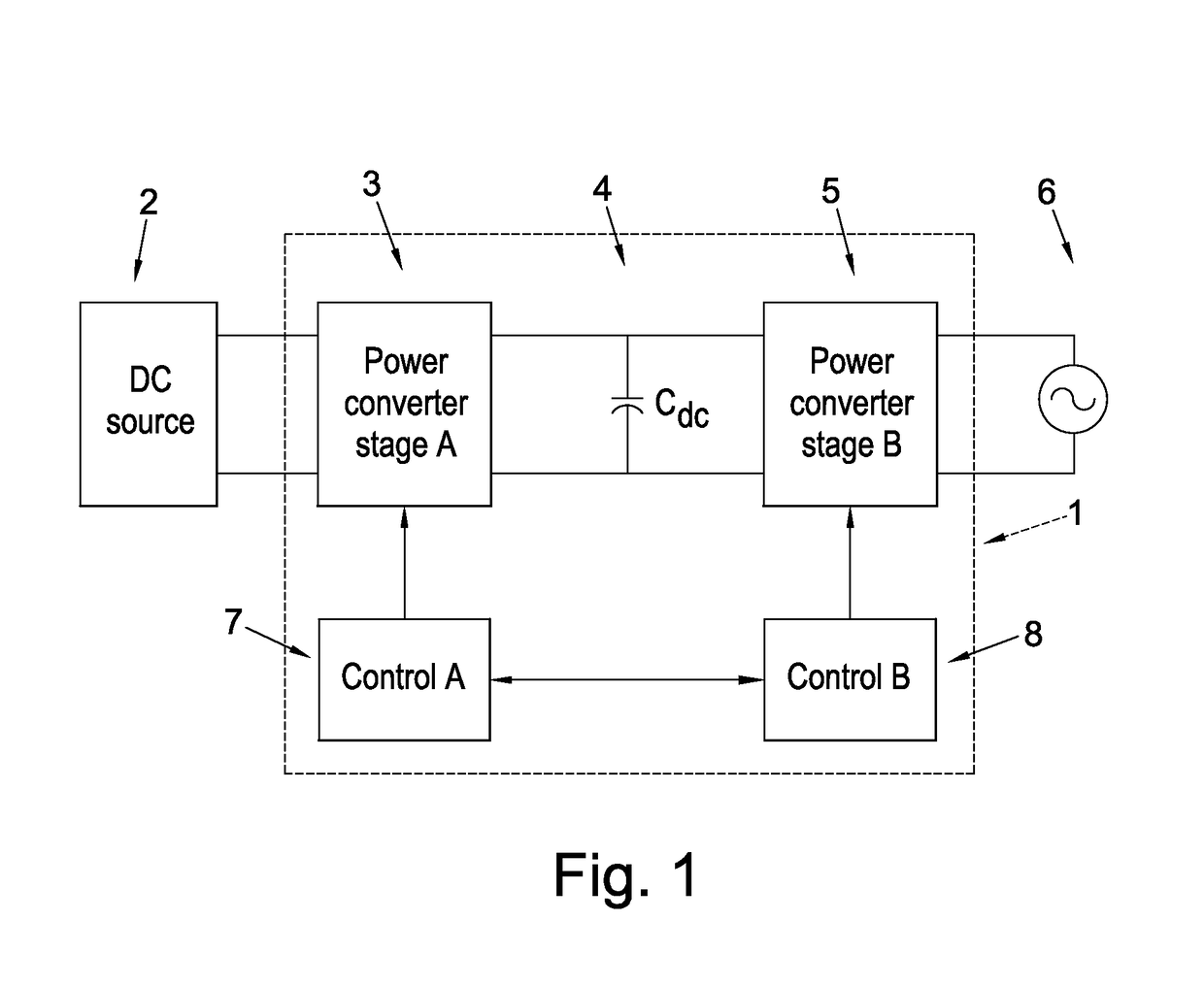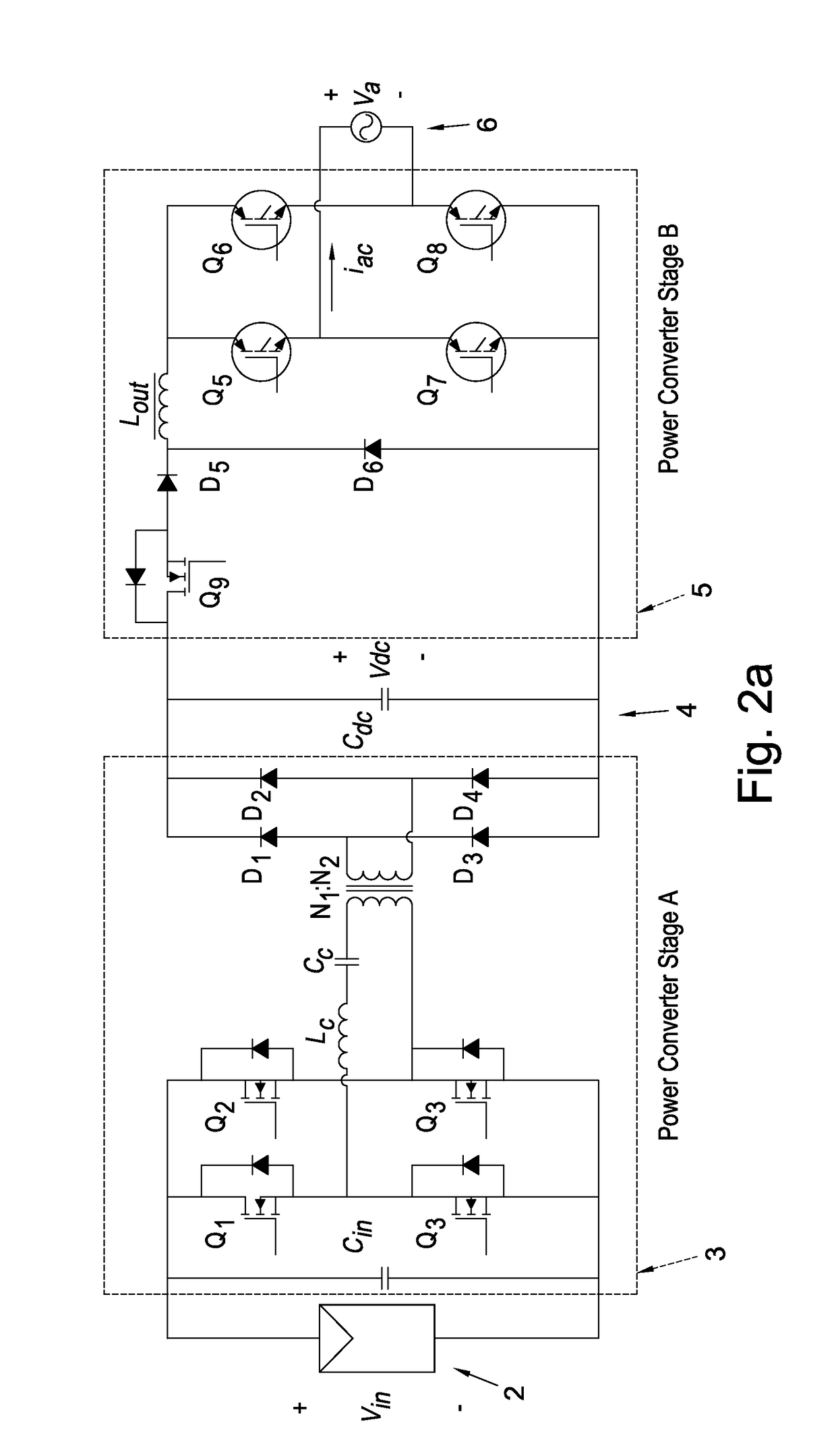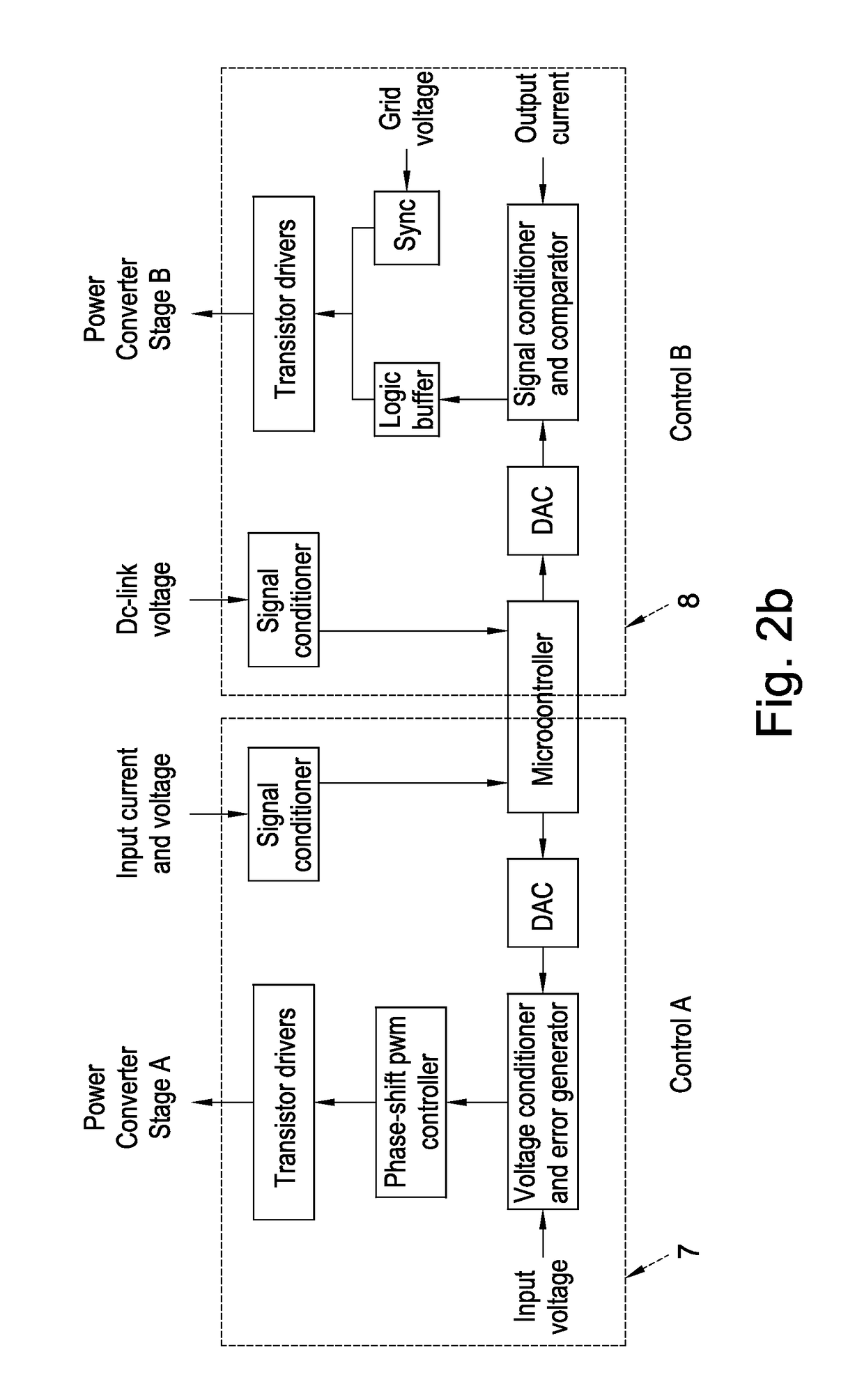Photovoltaic power conditioning units
a power conditioning unit and photovoltaic technology, applied in the field of system architecture, circuit and technique of photovoltaic power conditioning units, can solve the problems of long term degradation, premature failure of the panel, and relatively significant forward conduction voltage loss, so as to reduce ripple on the dc link, increase the voltage gain, and system can continue to operate efficiently
- Summary
- Abstract
- Description
- Claims
- Application Information
AI Technical Summary
Benefits of technology
Problems solved by technology
Method used
Image
Examples
first embodiment
[0068]Thus referring now to FIG. 4a, this shows a power conditioning unit 600 according to an aspect of the invention. In the architecture of FIG. 4a photovoltaic module 602 provides a dc power source for first and second dc-to-dc power conversion stages 604a, b, in this example each comprising an LLC resonant converter. Thus each of power conversion stages 604 comprises a dc-to-ac (switching) converter stage 606a, b to convert dc from module 602 to ac for a respective transformer 608a, b. The secondary side of transformers 608a, b are coupled to respective rectifying circuits 610a, b, which in turn provide a dc output to a respective series-coupled output inductor 612a, b. Each of output inductors 612a, b is coupled to a dc link 614 of the power conditioning unit, to which is also coupled a dc link capacitor 616. A dc-to-ac converter 618 has a dc input from a dc link and provides an ac output 620, for example to an ac grid mains supply.
[0069]A microcontroller 622 provides switching...
second embodiment
[0072]Referring now to FIG. 4c, this shows the power conditioning unit 650 similar to that of FIG. 4a but with an improved arrangement of output inductors. More particularly the output inductors 612 of the FIG. 4a are incorporated into respective transformers 652a, b of the front end dc-to-dc converter stages to facilitate load sharing between the conversion stages.
[0073]FIG. 4d illustrates example waveforms of multiphase interleaving of the switching of the converters 604a,b (in the Figure the waveforms illustrate example data control signals of the switches in stages 606a, b of the converters). To reduce ripple on the input capacitor the switching is preferably 180° out of phase between the two converters. However in embodiments the rectification circuits 610a,b of the power converters may be shared (not shown), i.e. so that a common set of rectifiers / rectification circuits is employed for both converters. In this case the interleaving between the dc-to-ac conversion portions of t...
PUM
 Login to View More
Login to View More Abstract
Description
Claims
Application Information
 Login to View More
Login to View More - R&D
- Intellectual Property
- Life Sciences
- Materials
- Tech Scout
- Unparalleled Data Quality
- Higher Quality Content
- 60% Fewer Hallucinations
Browse by: Latest US Patents, China's latest patents, Technical Efficacy Thesaurus, Application Domain, Technology Topic, Popular Technical Reports.
© 2025 PatSnap. All rights reserved.Legal|Privacy policy|Modern Slavery Act Transparency Statement|Sitemap|About US| Contact US: help@patsnap.com



